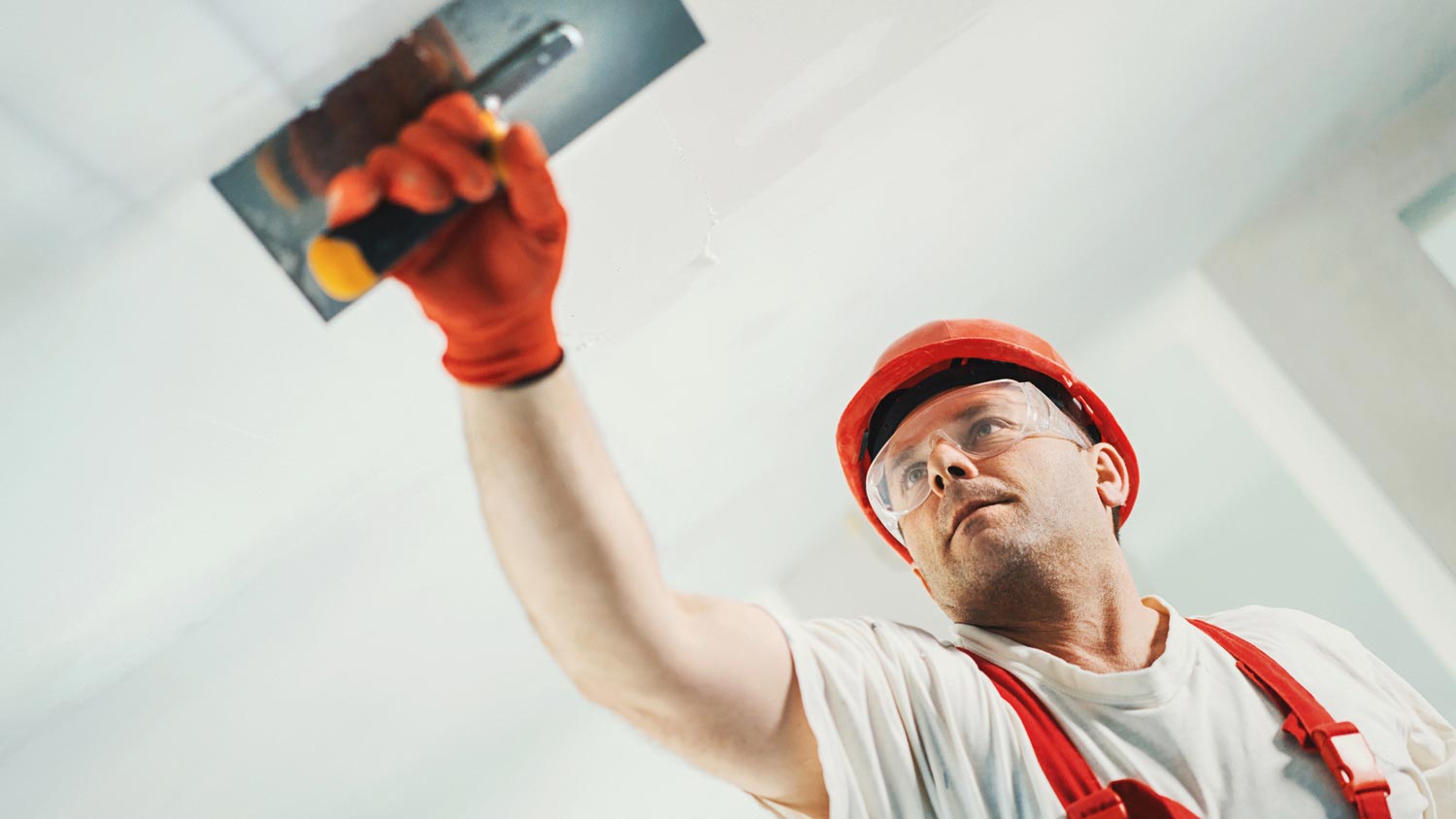
Drywall texture can create an attractive finish and add dimension to your home’s walls. This guide breaks down the factors that influence the cost to texture drywall.
Less is more when it comes to drywall mudding


Finishing drywall is an art, and many homeowners find the task difficult without extensive training and experience. However, there are plenty of tricks you can use to make the process go more smoothly and complete the job like the pros do. This guide offers 11 drywall mudding tips for your next renovation project.
Feathering is a technique for getting rid of hard lines in drywall mud and creating a smooth surface that doesn't require as much sanding. Feathering is more difficult when using a large trowel, a square edge, or a dull knife, so get the right tools before you start.
Place more pressure on one side of your drywall knife than the other. Spread quickly, because the longer your mud sits, the harder it is to create a smooth edge, which results in more sanding.
Apply three to four coats of drywall in thin layers. The thinner and smoother your coats, the less time you’ll spend sanding drywall.
Never sand between coats of drywall. Instead, use your drywall knife to shave down high spots before applying a new coat. When feathering your edges, you’ll likely leave only a small area in the middle to sand.
Sanding should be your final step, and is only necessary to smooth out the wall, blend edges, and remove protruding ridges.
A setting compound is best for large holes, deep gaps between drywall panels, and the first coat over a corner bead. Unlike regular drywall mud, a setting compound hardens rapidly and doesn't shrink. Before it hardens, thoroughly clean your mud pan and knife to remove all setting compound. Dump your leftovers in a bucket rather than a sink to prevent clogs.

Once your setting compound is as firm as bar soap, use a taping knife to shave off any lumps or sags. Setting compound is even harder to sand than regular drywall mud, and shaving here will make it easier to sand later. When it hardens completely, you can apply a coat of regular drywall mud over it.
If you notice gaps larger than 1/8 inch around electrical boxes for outlets and switches, fill them with a setting compound.
Be sure to shut off electrical power at your breaker box before pulling out switches or outlets, and always test the neutral and hot wires with a voltage tester. This will help you avoid electrical shock and damage to your metal tools or equipment.
Slide a drywall knife over the surface of any fasteners on your drywall. If you hear a metallic click, you'll know that a screw or nail is protruding above the face of the drywall. For screws, simply twist them in with a screwdriver. For nails, use a drywall hammer to drive in a shallow dimple, which you can then fill with drywall mud.
Use the same approach when removing nails from drywall, making a dent you can fill rather than just filling the nail hole.
If you have a line of several screw holes to patch, do so with one broad stripe of joint compound. This is faster and disguises holes better than filling each hole individually.
If there are areas where the drywall paper is torn or crushed, use a utility knife to cut it away. Leaving these sections as-is will likely lead to bubbles in your finish. Once trimmed, use a spray-on stain-blocking primer to seal the tears before patching.
When drywall joints are necessary, creating them with beveled edges facing each other is ideal, since the bevels can be taped and smoothed over with mud.
Butt joints occur where two non-tapered ends of drywall sheets meet. It's difficult to hide butt joints since drywall tape applied over top protrudes above the surface of the wall. Instead, install longer drywall sheets that cover walls corner-to-corner, or hang sheets vertically in rooms with long walls.

Hanging drywall isn’t easy. It can take a lot of time, and improper mudding can create very noticeable results. You can avoid the hassle by hiring drywall installers near you. These pros have the experience to finish even large rooms in just a few hours, and the cost to install drywall may be worth the time and effort saved on your part.
From average costs to expert advice, get all the answers you need to get your job done.

Drywall texture can create an attractive finish and add dimension to your home’s walls. This guide breaks down the factors that influence the cost to texture drywall.

Skim coating drywall is a great alternative to replacement, and is often more affordable. Use this guide to estimate the cost to skim coat walls in your home.

The cost to replace plaster with drywall can quickly add up. This guide will help you budget for this project and decide if it's worth the effort and cost.

Local building codes have strict requirements when it comes to drywall thickness. Use this guide to help you choose the right drywall size for your project.

Hanging drywall is only the beginning of creating smooth walls. We’ll show you the steps required for how to tape and mud drywall as the key finishing touch.

Hiring a drywall contractor to patch up a wall after plumbing or electrical work is your best bet to guarantee a smooth, clean finish. Finding a pro that’ll do a good job involves getting multiple quotes, plus checking references and qualifications.